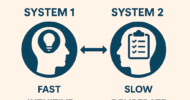Recently a good friend asked me to recommend an excellent primary care physician in New York City. When no one immediately came to mind, I asked a couple of doctor-friends who trained in New York. One friend, a cardiologist, gave me two names—one was a rheumatologist, who also practices general medicine, and the other an infectious disease doctor by training. My initial reaction to my cardiologist friend’s suggestion that a patient should see a subspecialist for primary care was one of slight annoyance.
In my view generalism is a specialty in its own right, and the concept that primary care would be as well-delivered by a physician whose main field of interest is a medical subspecialty seemed flawed. Sure, medical subspecialists go through training in Internal Medicine just as general internists do, but I question whether they really spend time keeping current with the broad range of primary care topics that fall outside of their domain of expertise. Is primary care really something that one can practice on the side, while trying to maintain an in depth knowledge of a medical subspecialty as well?
Much attention has been drawn of to the described shortage of primary care physicians in our country. Is this why patients in New York City are seeing subspecialists for primary care? Or, is it that a general internist alone, without a subspecialty practice on the side, cannot afford to live in New York City? Another friend warned me that most primary care physicians in Manhattan are “cash only.” Relatively lower pay for primary care doctors in the United States health care system has been blamed, in part, for the primary care physician shortage. I believe that it’s more than just pay.
Just how should subspecialists and primary care doctors interact? This has been the subject of debate for years. With the advent of managed care the general internist went from the role of esteemed consultant to the role of “gatekeeper.” A term that drives many of my older colleagues into a maddened frenzy. More recently we have become “primary care physicians,” a label that I personally don’t take issue with. In the United States patients are more likely to visit a subspecialist than a primary care physician. We refer patients to subspecialists more often than in other countries who have reported better performance on quality of care parameters. In the UK patients are referred to subspecialists at about half the frequency that patients in the US are referred. Care delivered by specialists is more expensive than that delivered by primary care physicians. Are there a quality of care differences? Studies have been conflicted on this point and it seems that it depends in part on the condition in question and also on the health delivery system that the care occurs in. An interesting study in the Annals of Family Practice found that many subspecialty visits are routine follow-up of chronic conditions, or preventive, as opposed to consultation requested by a primary care physician.
In many cases a specialist serving as primary care physician may refer to other subspecialists when conditions emerges that are beyond his or her scope of expertise. For example the cardiologist PCP may refer to an endocrinologist when a fasting blood glucose of 150 is detected, or the infectious disease PCP may refer to the nephrologist when a serum creatinine is 1.6 is detected. In my experience patients who have been managed for primary care by specialists tend to have many more doctors than those who are managed by a competent primary care physician. In some cases patients enjoy and benefit from these additional medical consultations, but many times patients come to me overwhelmed by the number of doctors they are seeing and the myriad of uncoordinated opinions that these various physicians have generated.
In our country over 100 million people suffer from a chronic condition. Amongst Medicare patients, over half have two or more chronic conditions. The Patient Centered Medical Home, with its team-based approach led by a personal physician, has been proposed as a solution to improving care within our health care system. Other primary care physicians have rejected this vision in favor of maintaining a more traditional doctor-patient relationship. However, in order to continue to provide the type of general medical care they feel is best for their patients some primary care physicians are choosing alternative models of care delivery, including retainer fee practices, which come in a variety of models, or micropractices with very low overhead and high tech solutions to improve efficiency and outcomes.
Accountable care organizations have been promoted as a means to support high quality and lower cost delivery of care. Primary care practices that exist in isolation may find it increasingly difficult to survive. Such practices should make attempts to establish linkages and improved lines of communication with their subspecialist colleagues and hospitals. The hope is that meaningful use of electronic medical records will allow such communication– if these electronic records are not too expensive for the small medical practice to adopt.
However, it should be emphasized that whether or not primary care succeeds is not only in the hands of primary care physicians and policy makers. Placing a higher value on generalism as an esteemed specialty from within the field of medicine will help enhance the standing of primary care in our country. Medical specialists will need to embrace a changing role with better shared care if we want to solve the primary care shortage and entice new trainee into this most fascinating specialty of medicine.
Juliet K. Mavromatis is an internal medicine physician who blogs at Dr Dialogue.
Submit a guest post and be heard on social media’s leading physician voice.





















![Why true listening is crucial for future health care professionals [PODCAST]](https://kevinmd.com/wp-content/uploads/Design-3-190x100.jpg)
![Surviving kidney disease and reforming patient care [PODCAST]](https://kevinmd.com/wp-content/uploads/Design-2-190x100.jpg)
